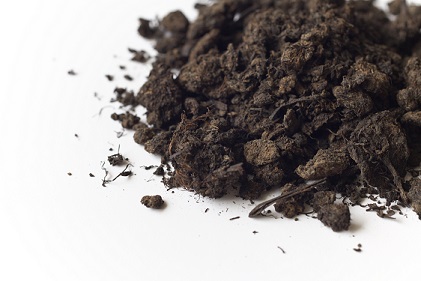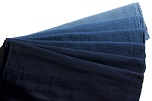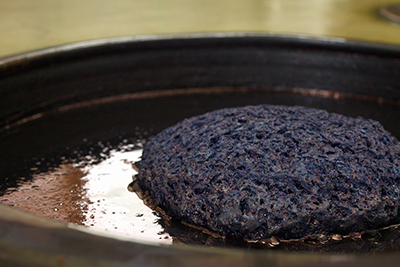文字サイズ
Tokushima Prefecture
Awa indigo dye that creates beautiful color appeared at markets all over the country from the Edo Period (1603–1868), and brought enormous wealth to Tokushima’s economy and culture. Awa indigo is still produced in Tokushima by the indigo dye artisans, who are passing on the tradition. The production volume has a majority of the share in Japan, and Awa indigo supports JAPAN BLUE, the Japanese indigo color.
“Sukumo” is the natural dye made of indigo, a plant belonging to Polygonaceae, (knotweed family), whose leaves are dried and fermented. Natural indigo dye products are made of indigo dye liquid using Sukumo, and Sukumo produced in Tokushima is called Awa indigo.
It takes almost a year to produce Awa indigo: indigo seedlings are planted in spring; the grown plants are reaped in summer; and their leaves are ground finely, dried well and piled up in facilities called “Nedoko” (literally means bed). Only water is sprinkled on the piled indigo leaves (between several hundred kilograms and several tons), and they are fermented under meticulous temperature control for approximately 100 days to be ready as Awa indigo.

One of the most important of Awa indigo’s many attractions is its color. A variety of beautiful colors are produced from indigo dye and the names of colors vary: “Kamenozoki” (peeping at a tub), the pale color seen when you peep in a tub containing indigo dye liquid; “Hanadairo”, light blue; “Aiiro”, indigo blue; and “Kachiiro”, winning color) used to be worn by samurai warriors as its name is a good omen for winning.

Sukumo contains indigo color pigments. The pigments are not water soluble and cannot be used for dye as they are. First, indigo leaves need to be mixed with alkaline substances such as lime and wood ash lye in a container and fermented for a week under observation in order to make the indigo color pigments become water soluble.
Cloths are then immersed for a while in the dye liquid made by the method above, and aired. The indigo color pigments react with the oxygen in the air and are fixed by returning to be water insoluble. After washing the cloths well in the water, unnecessary and unfixed color substances are washed away and a vivid indigo color appears.

The origin of Awa indigo is not certain; however, it seems to have already been produced and traded in the Muromachi Period (1336–1573) as there are some records of shipping of indigo in Hyogo Kitazeki Shipping Tax Ledger (1445).
Production volume increased between the Edo and Meiji Period (1603–1912) and dominated the market share all over the country in 1700s. There are three reasons for its prosperity.
The prosperity of Awa indigo lasted until 1800s. The indigo cultivation area in Tokushima reached its peak of approximately 15,000 hectares in 1903. However, the import of the precipitated indigo from India and synthetic indigo from Europe grew, and Tokushima’s indigo production volume plummeted. Nowadays, the beauty and natural texture of natural indigo have been re-evaluated and the tradition of Awa indigo has been passed on through the generations thanks to the effort of indigo artisans and other people involved, who preserve and promote Awa indigo.
The Yoshino River runs from east to west across Tokushima Prefecture, and indigo used to be cultivated around the stream. There was no river levee around the Yoshino River, and it caused floods every Typhoon season due to a significant amount of rainfall. Rice farming was not suitable in Tokushima as typhoons often came just before rice reaping periods and caused a big damage on rice crops. Instead, indigo business suited in the area as indigo requires to be reaped before the typhoon season. Needless to say, the floods due to the typhoons caused dangerous and devastating damage; however, in the meantime, the floods made continuous indigo cultivation possible by bringing fertile soils to the land after indigo was reaped, although indigo is normally difficult to cultivate in the same land.
Copyright © Tokushima Prefecture, All rights reserved.